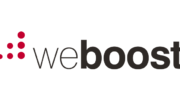Let’s talk about the elephant in the room first. In most countries, cellular service is highly regulated, even more than it is here. In most countries, all cell phones work with all providers and that makes for a more level playing field for consumers. In the past it’s also meant that carriers weren’t free to expand as quickly, which is why the US has some of the best cell coverage in the world. There’s obviously good and bad when it comes to the way cell service has been implemented here in the US, but the system works the way it is and it’s not likely to change quickly, because that would make millions or even billions of phones obsolete.
Here in the US, cell carriers are free to choose the technology used for their phones and to a limited extent, they’re also free to choose which frequencies their phones use. I say “limited” because the FCC approves the uses for each frequency band and there are only so many frequencies that can be used for this purpose. Most cell providers use the 700Mhz, high 700Mhz, 800MHz, 1900MHz and 2100MHz ranges. (these are really broad numbers, the actual frequencies vary by provider.) So when you get a 4G cell booster, it’s covering all 5 of the frequency ranges that are used by most carriers. For the most part, voice transmissions take place in the 800 and 1900MHz ranges, and the other ranges are used mostly for data.
So OK that’s a lot of numbers. If you’re still awake, let’s get to the interesting part.
Most of the cell carriers in the US have built out their networks with a fairly predictable plan. Sprint, on the other hand, has had a different history. The broadcast licenses it owns are all over the map, from 800MHz to 2700MHz, and while they have the legal right to use these frequencies, they’re the only ones who use them. Sprint’s “broadcast portfolio” comes from the fact that they bought other companies like Nextel, and because they had this grand plan to launch a superfast network that never really worked right called WiMax.
Cellular booster companies don’t build boosters that work with Sprint’s data frequencies even though they could. It’s just a matter of supply and demand — while Sprint does have about 1/8th of the US market, that means that a cell booster company can support 7/8 of the market and still ignore sprint customers. That’s a pretty powerful reason to ignore Sprint, when you realize the extra engineering and cost that would be required to build Sprint support into every booster.
To be fair, you can use a “dual band” or 3G booster for Sprint’s voice service because it shares frequencies with other cell carriers. We’re just talking about data here. If you’re looking at a booster for your home or for somewhere else that has Wi-Fi, that may be all you need anyway.
And yes, someone always points out that I tend to be really harsh in the way I treat Sprint on this blog, because I do think they’ve made a lot of bad decisions, and I do think they have a real challenge as they move forward. But whether or not you agree with me on that, the numbers don’t lie: a cell booster isn’t going to help you with Sprint’s data network. Simple as that.





